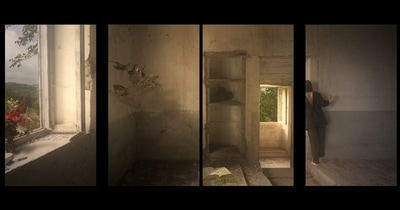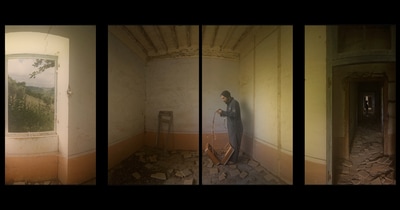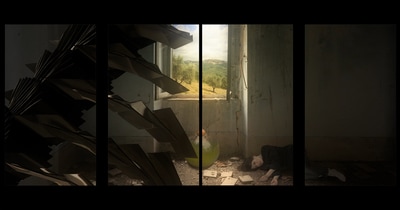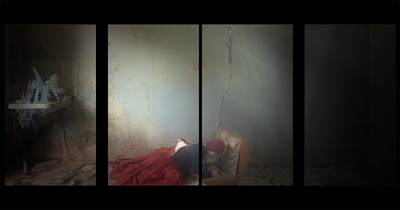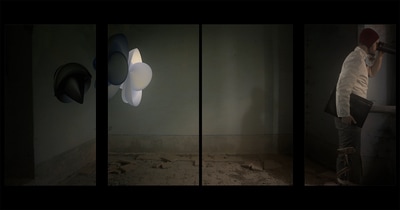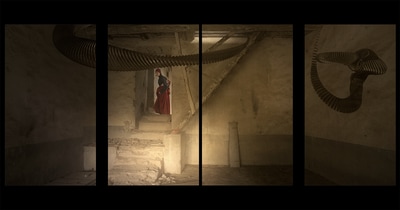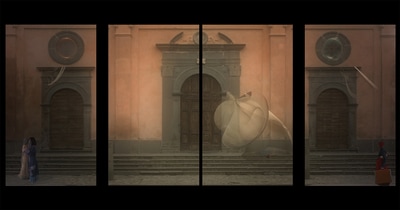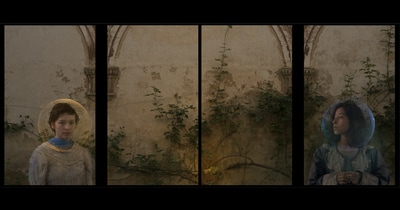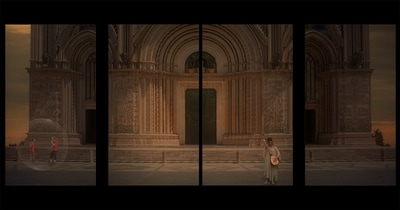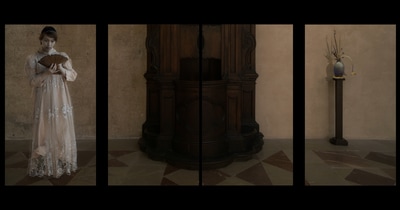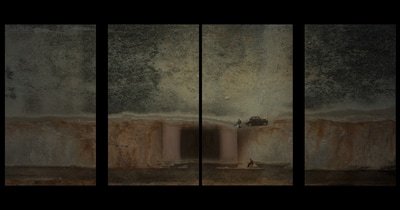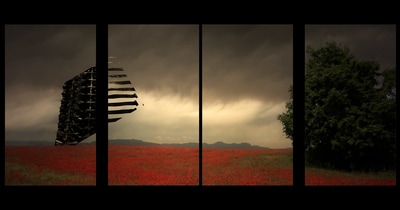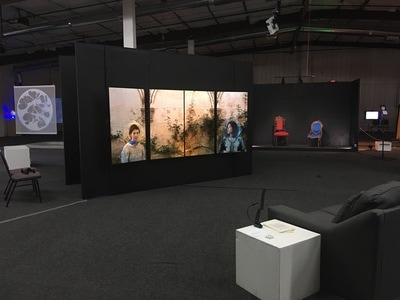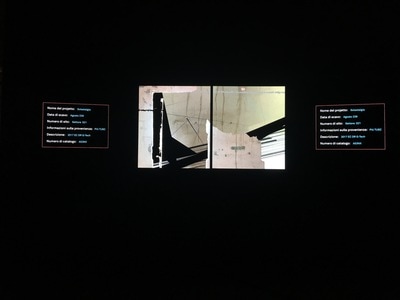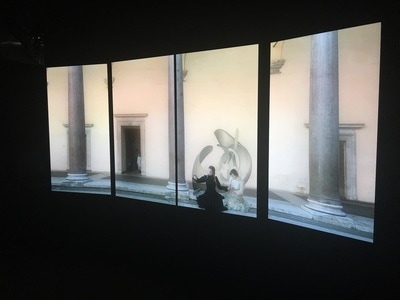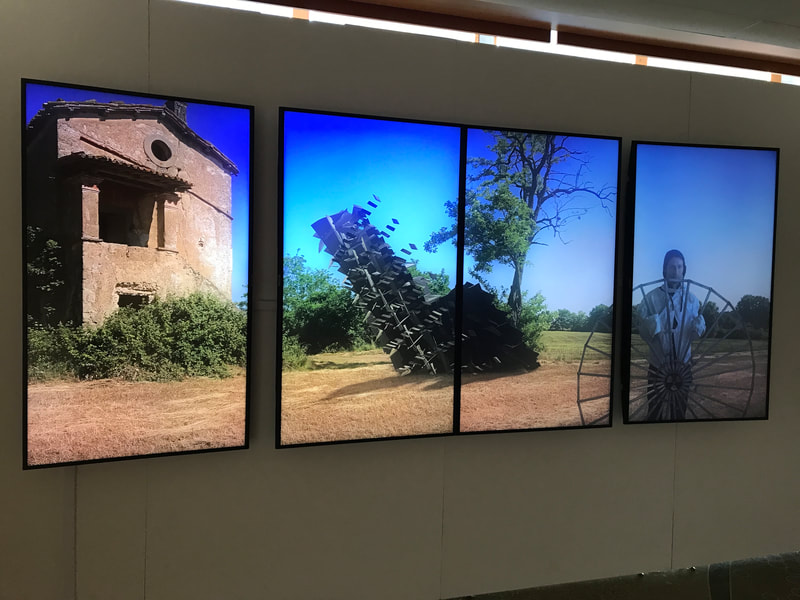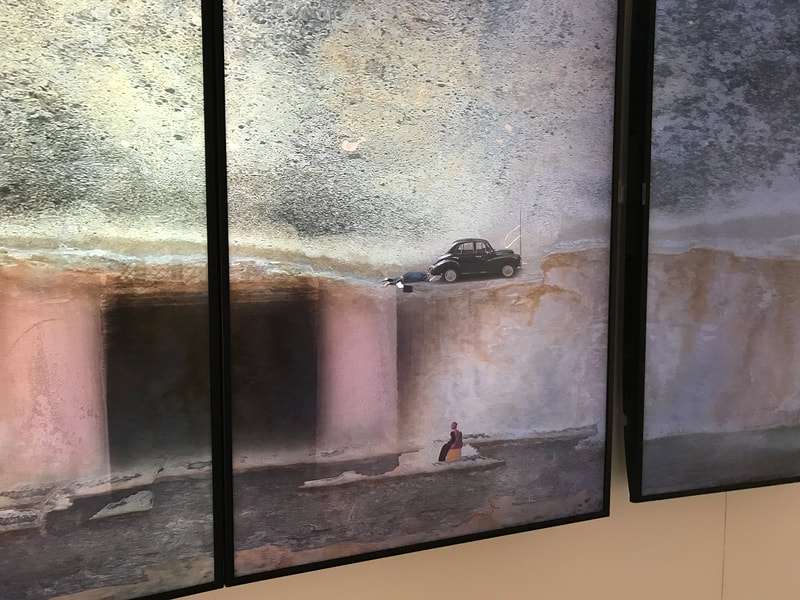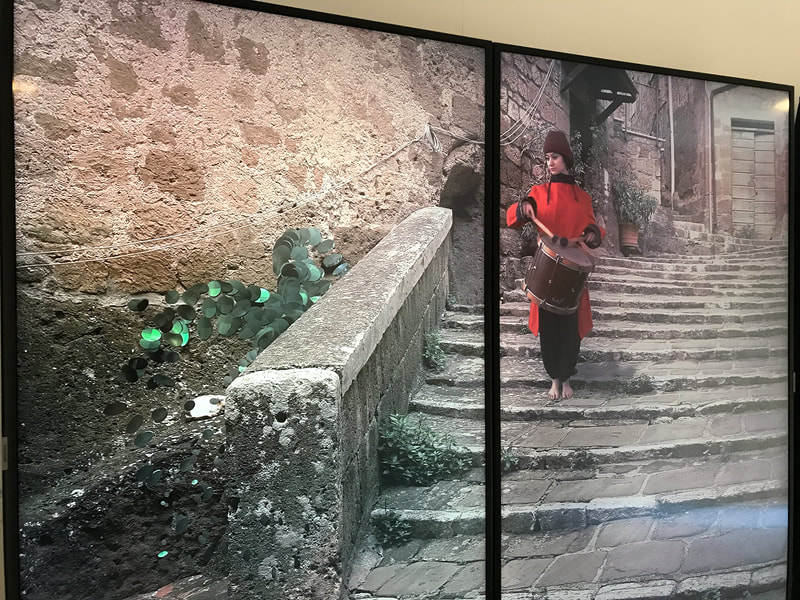Solastalgia, 2017 (Choreography and costumes by Babette DeLafayette Pendleton; music by Stephen Fandrich and Seattle Harmonic Voices)
four-channel synchronized video triptych displayed on four 55" OLED 4K flat panel displays, 49 minute loop
90" x 50"
Currents International New Media Festival, El Museo Cultural, Santa Fe, NM (2017)
Yellowfish Festival, Seattle, WA (2018)
President's Gallery, Cornish College of the Arts, Seattle, WA (2018)
Bellwether Arts Festival, Bellevue City Hall, Bellevue, WA (2019)
VIDEO
four-channel synchronized video triptych displayed on four 55" OLED 4K flat panel displays, 49 minute loop
90" x 50"
Currents International New Media Festival, El Museo Cultural, Santa Fe, NM (2017)
Yellowfish Festival, Seattle, WA (2018)
President's Gallery, Cornish College of the Arts, Seattle, WA (2018)
Bellwether Arts Festival, Bellevue City Hall, Bellevue, WA (2019)
VIDEO
Running Time: 49’
The Making of Solastalgia
The primary imagery for this work was collected during a two-month fellowship in central Italy, a country known for its stone hilltop towns and villages, pastoral landscapes, and heritage preservation- a kind of opposite value to the current American ethos of rapid renewal and development so keenly observed and felt in the current aggressive Seattle urban makeover.
The human figures (some of them dancers) were videotaped later in Seattle in a green screen facility (with choreography and costumes by Babette DeLafayette Pendleton), and subsequently composited into the photographic environments, along with animals, birds, water and smoke, employing a 2.5D animation technique I have been using since 2012, when I finished Pulchrior in Luce, a non-linear feature-length film shot in Italy, France, Switzerland, Holland, Austria and the United States.
The work is composed of several sets of slow-moving synchronous tableaux displayed across four vertically placed 55-inch flat screen monitors that together form a traditional triptych. While digital in origin, the imagery can be thought of, in my view, as belonging to a sub-genre of painting.
There is a dystopian conceit underlying the work which is explained in a wall text* (see below). The compositions are coded to provide insights into the meaning-tones of each tableau, with repetitive motifs occurring throughout. It is hoped that the viewer will feel invited to engage with Solastalgia’s "kairos" rippling backward from some 500 years in the future, as well as its slowly-evolving "chronos", and bring a sense of wonder and mystery to the encounter(s).
Wall Text (English version):
"Solastalgia is an historical, image-based research project conducted by archeologist Ecco Tecchi, well known in the field of early 21st century CE elemental digital archaeology and reconstruction (READ). She has been working for five years at a site in the Civita di Bagnoregio archaeological sector (SACB) of central Italia in the region known at that time as Northern Lazio.
The project is comprised of approximately 49 minutes of recovered image and sound data. Each reconstructed data segment is introduced by identical identification tags (one in English, one in Italiano) on the outer panels, noting the project name, excavation date, site number, catalog number, etc. The linear order of these segments corresponds to the data modification dates retrieved from two aluminum data discs unearthed at the site.
The originating group behind the image genesis is unknown. It is possible that the imagery might have had some sort of speculative documentary relevance in its day, but the purpose of the reconstructed files remains a mystery. There is at least one reference to the outer panels of 15th century CE painter Hieronymus Bosch’s Garden of Earthly Delights, a well-known triptych, which was lost in a calamitous fire ca. 2183 CE. Tecchi has determined that the images were captured in disparate parts of the world: the metal, glass and cement buildings in the final image data reconstruction, for instance, have been positively identified as belonging to the lost city of Seattle on what once was the west coast of North America. Most of the data reconstructions portray the architectural features of human civilization in and around the SACB (as described in the archives of noted 20th century CE Latvian architect Astra Zarina, a long-time inhabitant of Civita di Bagnoregio, with deep connections to Seattle) approximately two centuries before the area was destroyed by a series of powerful earthquakes. Though not included here, Tecchi has also identified fragments of written materials discovered at the site as connected to the originating group, which repeatedly reference topics such as climate, singularity, empire, and solastalgia, 'a form of psychic or existential distress caused by environmental change. A loss of certainty in a once predictable environment is common among groups that express solastalgia.'
A note on sound: many of the READ data reconstructions had damaged sound data embedded in them. Wherever possible, that data has been repaired and activated for the viewer to hear."
The Making of Solastalgia
The primary imagery for this work was collected during a two-month fellowship in central Italy, a country known for its stone hilltop towns and villages, pastoral landscapes, and heritage preservation- a kind of opposite value to the current American ethos of rapid renewal and development so keenly observed and felt in the current aggressive Seattle urban makeover.
The human figures (some of them dancers) were videotaped later in Seattle in a green screen facility (with choreography and costumes by Babette DeLafayette Pendleton), and subsequently composited into the photographic environments, along with animals, birds, water and smoke, employing a 2.5D animation technique I have been using since 2012, when I finished Pulchrior in Luce, a non-linear feature-length film shot in Italy, France, Switzerland, Holland, Austria and the United States.
The work is composed of several sets of slow-moving synchronous tableaux displayed across four vertically placed 55-inch flat screen monitors that together form a traditional triptych. While digital in origin, the imagery can be thought of, in my view, as belonging to a sub-genre of painting.
There is a dystopian conceit underlying the work which is explained in a wall text* (see below). The compositions are coded to provide insights into the meaning-tones of each tableau, with repetitive motifs occurring throughout. It is hoped that the viewer will feel invited to engage with Solastalgia’s "kairos" rippling backward from some 500 years in the future, as well as its slowly-evolving "chronos", and bring a sense of wonder and mystery to the encounter(s).
Wall Text (English version):
"Solastalgia is an historical, image-based research project conducted by archeologist Ecco Tecchi, well known in the field of early 21st century CE elemental digital archaeology and reconstruction (READ). She has been working for five years at a site in the Civita di Bagnoregio archaeological sector (SACB) of central Italia in the region known at that time as Northern Lazio.
The project is comprised of approximately 49 minutes of recovered image and sound data. Each reconstructed data segment is introduced by identical identification tags (one in English, one in Italiano) on the outer panels, noting the project name, excavation date, site number, catalog number, etc. The linear order of these segments corresponds to the data modification dates retrieved from two aluminum data discs unearthed at the site.
The originating group behind the image genesis is unknown. It is possible that the imagery might have had some sort of speculative documentary relevance in its day, but the purpose of the reconstructed files remains a mystery. There is at least one reference to the outer panels of 15th century CE painter Hieronymus Bosch’s Garden of Earthly Delights, a well-known triptych, which was lost in a calamitous fire ca. 2183 CE. Tecchi has determined that the images were captured in disparate parts of the world: the metal, glass and cement buildings in the final image data reconstruction, for instance, have been positively identified as belonging to the lost city of Seattle on what once was the west coast of North America. Most of the data reconstructions portray the architectural features of human civilization in and around the SACB (as described in the archives of noted 20th century CE Latvian architect Astra Zarina, a long-time inhabitant of Civita di Bagnoregio, with deep connections to Seattle) approximately two centuries before the area was destroyed by a series of powerful earthquakes. Though not included here, Tecchi has also identified fragments of written materials discovered at the site as connected to the originating group, which repeatedly reference topics such as climate, singularity, empire, and solastalgia, 'a form of psychic or existential distress caused by environmental change. A loss of certainty in a once predictable environment is common among groups that express solastalgia.'
A note on sound: many of the READ data reconstructions had damaged sound data embedded in them. Wherever possible, that data has been repaired and activated for the viewer to hear."
